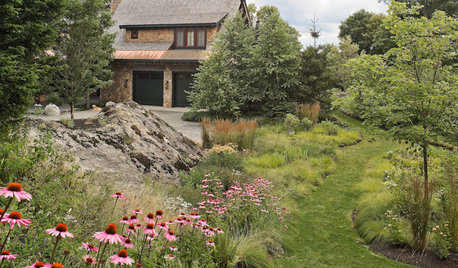anybody use Spinosad Insecticide ??
ruthz
11 years ago
Related Stories

GARDENING AND LANDSCAPING4 Good Ways to Get Rid of Mosquitos in Your Yard
Stay safe from West Nile virus and put an end to irksome itches with these tools and methods for a porch, patio or yard
Full Story
KITCHEN DESIGNDisplaying Kitchen Supplies — Hot or Not?
Do some kitchens just beg for a cozy row of canisters and gear for all to see? Have a look and let us know what you think
Full Story
CHRISTMAS10 Easy Decorating Ideas for a Festive Entryway
'Tis the season for welcoming guests with wreaths, special lighting and plenty of comfy seating
Full Story
FARM YOUR YARDHello, Honey: Beekeeping Anywhere for Fun, Food and Good Deeds
We need pollinators, and they increasingly need us too. Here, why and how to be a bee friend
Full Story
MOST POPULARHow to Get Rid of Those Pesky Summer Fruit Flies
Learn what fruit flies are, how to prevent them and how to get rid of them in your home
Full Story
GARDENING GUIDES13 Risks to Take for True Garden Rewards
Go ahead, be a rebel. Breaking rules in the garden can lead to more happiness, creativity and connection with the earth
Full Story
PETSPet-Proofing Your Home: A Room-by-Room Guide
Not all pet dangers are obvious. Keep furry friends safe and sound by handling all of these potential hazards
Full StoryMore Discussions







carrie751
Lin barkingdogwoods
Related Professionals
Belmont Landscape Architects & Landscape Designers · Cottonwood Landscape Architects & Landscape Designers · Elwood Landscape Architects & Landscape Designers · New Mexico Landscape Architects & Landscape Designers · Saint Louis Park Landscape Architects & Landscape Designers · Medford Landscape Contractors · Aberdeen Landscape Contractors · Fuquay-Varina Landscape Contractors · Hawthorne Landscape Contractors · Lewisville Landscape Contractors · North Canton Landscape Contractors · North Richland Hills Landscape Contractors · West Chester Landscape Contractors · Greatwood Window Contractors · Naples Window Contractorscarrie751
roselee z8b S.W. Texas
ruthzOriginal Author
roselee z8b S.W. Texas
wantonamara Z8 CenTex